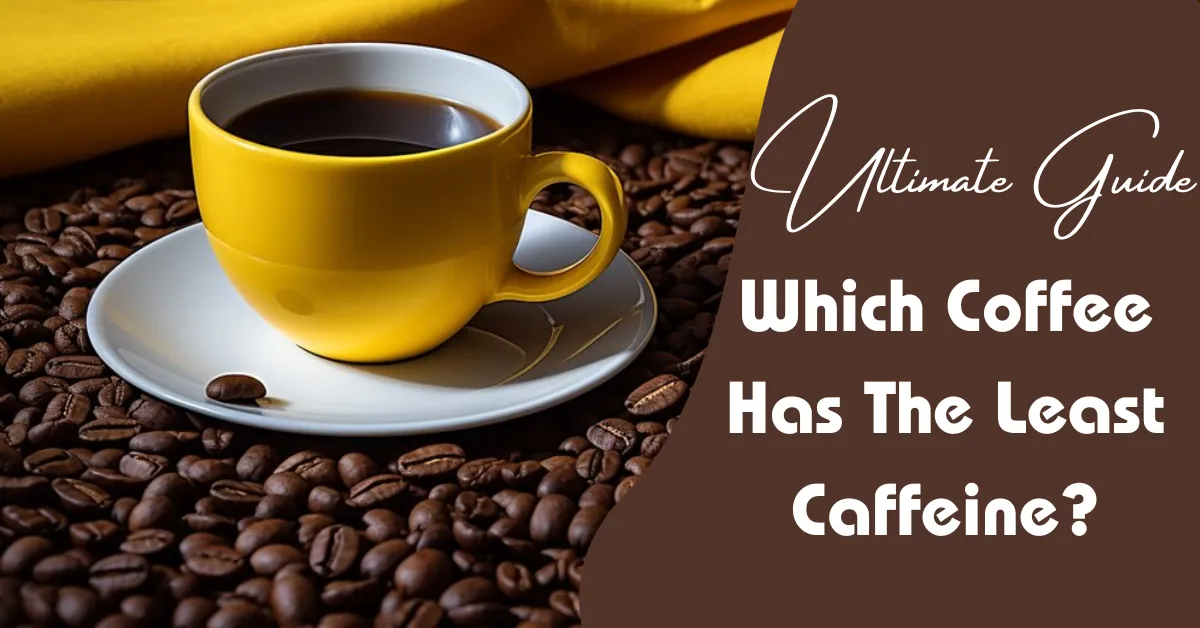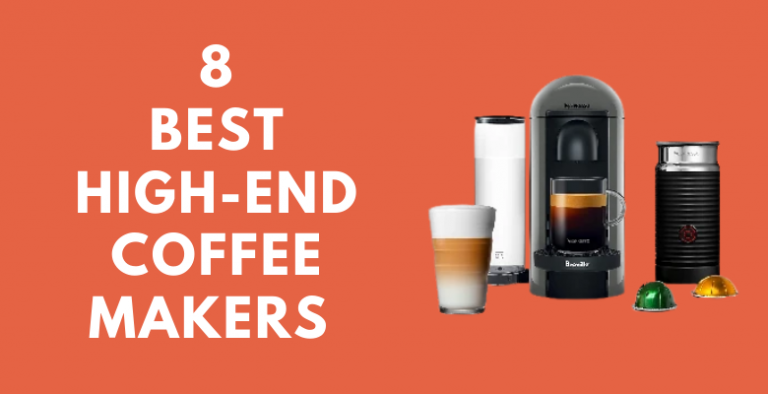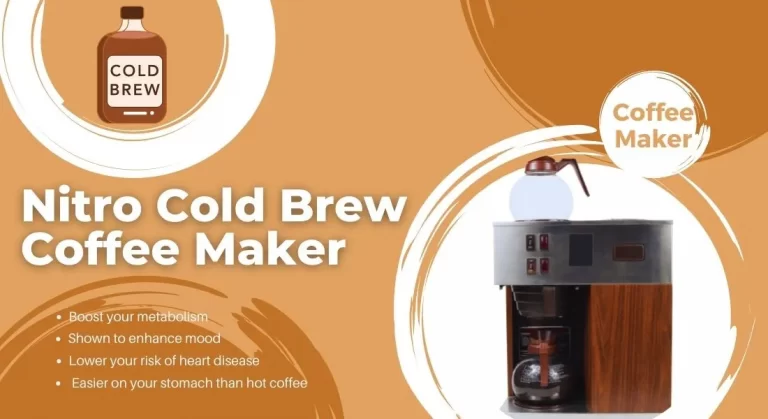Which Coffee Has The Least Caffeine?

Ever find yourself in need of a little mid-day pick-me-up but don’t want to go all-in on the caffeine? Try coffee types that are naturally low on caffeine! However, the amount of caffeine depends on many factors. For instance, the instant coffee with the least caffeine at Starbucks is the decaf Pike Place roast, which contains 25 mg. But at Dunkin’ Donuts, it contains only 7mg. Interested to know more about your favorite coffee’s caffeine amount? Check the table given below!

| Coffee Chain | Medium cappuccinos | Filter coffee (8oz) | Single espressos | Latte (12oz) | Caffè Americano (10-12 oz) |
|---|---|---|---|---|---|
| Starbucks | 66 mg | 102 mg | 33 mg | 150 mg | 150-170 mg |
| Dunkin’ Donuts | 166 mg | 180 mg | 150 mg | 118 mg | 237 mg |
| Caffe Nero | 110-115mg | 112 mg | 45 mg | 160 mg | 120-160 mg |
| Greggs | 197 mg | 225 mg | 75 mg | 86.32 mg | 140.63 mg |
| Pret | 180 mg | 271 mg | 180 mg | 180-225 mg | 182 mg(Black) |
| Costa | 325 mg | 277 mg | 100 mg | 92 mg | 185 mg |
There are other options to consider, like dark roast coffee, Arabica beans, or decaffeinated coffee. They all come with a lower dose of caffeine, usually ranging from 2 to 5 mg per serving.
We’ve got the inside scoop on how to choose the perfect low-caffeine coffee. Let’s explore what makes up the coffee caffeine levels for a better understanding!
How to Choose Low-Caffeine Coffee?
What makes coffee have more or less caffeine? Well, a few things come into play. First, the type of coffee roast and bean, how you brew it, how much coffee you use, and the size of your coffee serving all play a part. Let’s start by going over the factors that influence caffeine content.
Understanding Caffeine Content in Different Roasts
Different roasts contain varying levels of caffeine–It’s no secret.
Caffeine Levels in Light vs. Dark Roast Coffee
Light roast coffee tends to have more caffeine than its darker sibling. And it all comes down to the roasting process. When coffee beans are roasted, some of the caffeine can get lost in the mix. That means the longer coffee beans are roasted, the more caffeine says goodbye.
However, don’t expect a caffeine knockout. The difference in caffeine levels between light and dark roast coffee is modest.
For example, a 12-ounce cup of light roast coffee might pack about 100 milligrams of caffeine, whereas the same amount of dark roast coffee could have roughly 97-98 milligrams. So, we’re not talking about a huge gap here.
Bean Size Matters, But Not Caffeine
Now, when it comes to the size of the coffee beans, dark roast beans are smaller. But bean size doesn’t affect caffeine content. The caffeine remains the same in both light and dark roast beans.
So, when you’re in the mood for a low-caffeine coffee, just go for the darker color of the roast. But also, consider how you measure your coffee and let that guide your caffeine experience.
Variety of Coffee Bean–Arabica vs. Robusta vs. Laurina
Let’s talk about coffee beans, as not all are created equal, especially regarding caffeine. Naturally, low-caffeine coffee beans are three:
Arabica Beans:
Arabica beans generally contain less caffeine than Robusta (Coffea canephora) beans. Now, Arabica isn’t a one-size-fits-all deal either. There are different arabica varieties, and their caffeine levels vary quite a bit.
Arabica beans usually have caffeine levels ranging from 0.8% to 1.4%. So, if you’re looking for coffee with lower caffeine content, Arabica is the better choice.
Robusta Beans:
In the opposite corner, we’ve got Robusta. They pack over 68.6–81.6 grams of caffeine per kilogram of dry coffee. It’s known for its low oil content that creates thick and stable crema on top of your espresso.
So, when you’re sipping a strong coffee, there’s a good chance some robusta is in the blend.
Laurina Coffee Beans:
Laurina coffee has the least amount of caffeine among the options mentioned. It typically contains about half the caffeine content of arabica beans and only a quarter of the caffeine in robusta beans.
Unlike decaf coffee, this coffee doesn’t sacrifice the flavor. So, if you’re looking for a coffee with less caffeine, Laurina might be your new BFF.
Coffee Types and Caffeine Analysis
Choose Your Caffeine Level depending on the type of brew! Even the coffee brewing methods affect your caffeine intake.
Here’s a tip–Try using a French Press for brewing low-caffeine coffee. This method results in lower caffeine content compared to drip coffee because it brews the coffee quickly.
If, on the other hand, you crave a strong caffeine kick, opt for methods like cold brew. Here’s how you can get lower caffeine options depending on your mood and preferences:
Brewed Coffee: The Classic Sip (95 mg)
Brewed coffee is your trusty, classic choice. On average, an 8-ounce cup contains about 95 milligrams of caffeine, but it can vary based on the above factors.
The ground coffee beans meet hot water, and they hang out in a filter for a while. You can brew it in various ways–with a filter, a percolator, or even a French press.
Decaf: Not Zero Caffeine, but Close (2-5 mg)
Almost Caffeine-Free but not entirely is the Decaffeinated coffee. With a mere 2 to 5 milligrams of caffeine per 8-ounce serving, it has low caffeine. The exact caffeine content depends on the bean type, roast level, and decaffeination method.
Instant Coffee: It’s Quick, but Is It Low Caffeine? (30-90 mg)
Instant coffee is a bit of a caffeine mystery. Some types use milder Arabica beans, while others opt for stronger Robusta beans. The instant process removes some caffeine from the mix. On average, an 8-ounce cup has around 30 to 90 milligrams of caffeine.
Keep in mind that even decaffeinated instant coffee has a small caffeine kick, so check the label if you’re keeping tabs on your caffeine intake.
Espresso: A Little Cup with a Lot of Caffeine (30-45 mg)
Espresso may be small, but it’s mighty in terms of caffeine concentration. A single 1-ounce shot contains around 63 milligrams, and a double shot doubles that.
If you’re caffeine-sensitive, consider a smaller serving or go for decaffeinated espresso to stay on the safe side.
Cold Brew: Iced, Bold, and Caffeinated
If you like your caffeine-chilled and robust, cold brew is the way to go. A 12-ounce cup can pack a punch with 153–238 milligrams of caffeine. That’s a lot of caffeine, and it’s on the list of the most caffeinated coffee.
Recommended Instant Low Caffeine Coffees
Maud’s Instant Half Caff Coffee: If you’re looking for an instant coffee that won’t turn you into a jittery mess, Maud’s Instant Half Caff Coffee’s for you.
The “half-caff” nature of the 100% Arabica beans in this coffee ensures you get that much-needed pick-me-up without sacrificing flavor. Keep in mind that the taste can vary slightly from pouch to pouch.
Lifeboost Coffee Half Caff: For those who prefer the delightful ritual of grinding their coffee beans, Lifeboost Half Caff Whole Bean coffee is a top recommendation. This coffee boasts a medium roast, providing a mellow and smooth flavor that pairs perfectly with cream and sugar.
Just be aware that, like Maud’s, the blend of decaf and full-caff coffee beans might occasionally result in slightly mixed flavors.
Healthwise Low Acid Coffee: If you’re all about the convenience of K-Cups and want to keep your caffeine intake in check, look no further than Healthwise Hazelnut Decaf Low Acid K-Cups.
They’re super low on caffeine and gentle on your stomach. These may be expensive but are worth it for a smoother coffee experience.
Comparing Caffeine in Popular Coffee Varieties
Ever wondered which coffee gets your day started gently and which ones are full-throttle caffeine bombs? We’ve put together a table to show you how much caffeine is in your popular Dunkin’ Donuts and Starbucks favorites!
For more detail, you can watch the video for a better understanding of the different Caffeine.
Final words
Remember, your caffeine intake can vary depending on a bunch of factors, so choose your coffee recipe and portion size wisely. And don’t forget, decaffeinated doesn’t mean caffeine-free–there’s still a bit left in there!
Frequently Asked Questions
1. Does cold brew have less caffeine?
Cold-brew coffee can contain more caffeine than hot-brewed coffee. It’s famous for being strong and concentrated.
2. Is there caffeine in green coffee beans?
Yes, green coffee beans naturally have caffeine(20-50 mg). The caffeine stays inside the beans until they get roasted.
3. Is there Low-caffeine coffee for pregnancy?
If you’re pregnant and want coffee with less caffeine, you can choose decaffeinated coffee or coffee with lower caffeine.
4. What is the Starbucks coffee with the most caffeine?
Starbucks’ Blonde Roast (Veranda Blend) is the coffee with the most caffeine(475 mg).
5. How much caffeine is in the average cup of coffee?
A regular 8-ounce cup of hot brewed coffee usually has around 80-100 milligrams of caffeine.





![Nespresso Pixie vs Citiz [Which one Is best & Why]](https://caffecionos.com/wp-content/uploads/2021/05/Nespresso-Pixie-vs-Citiz-768x394.png)